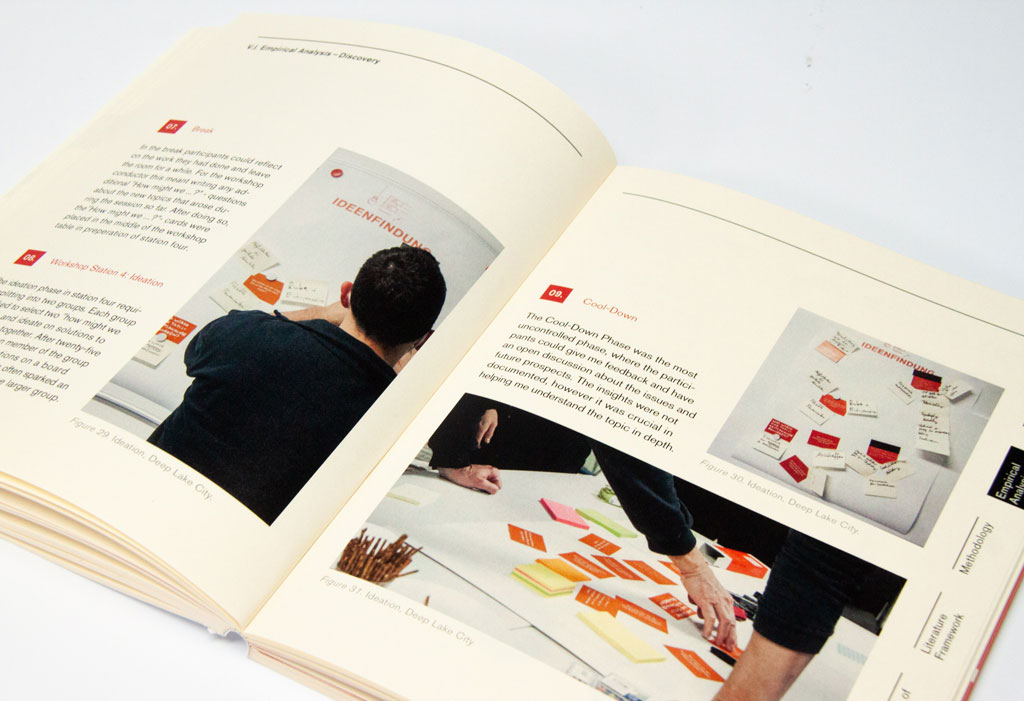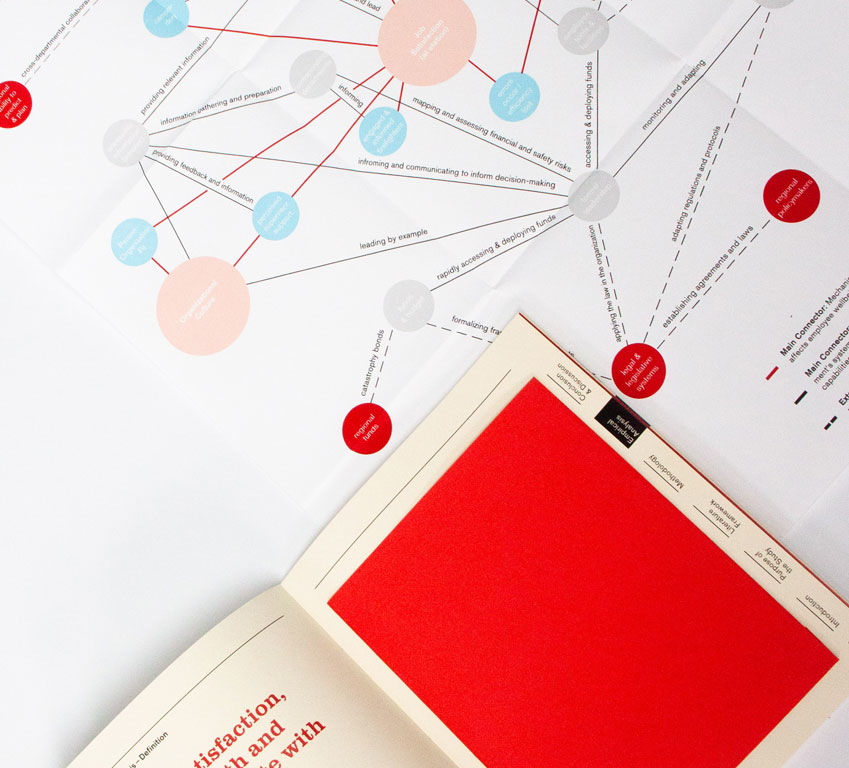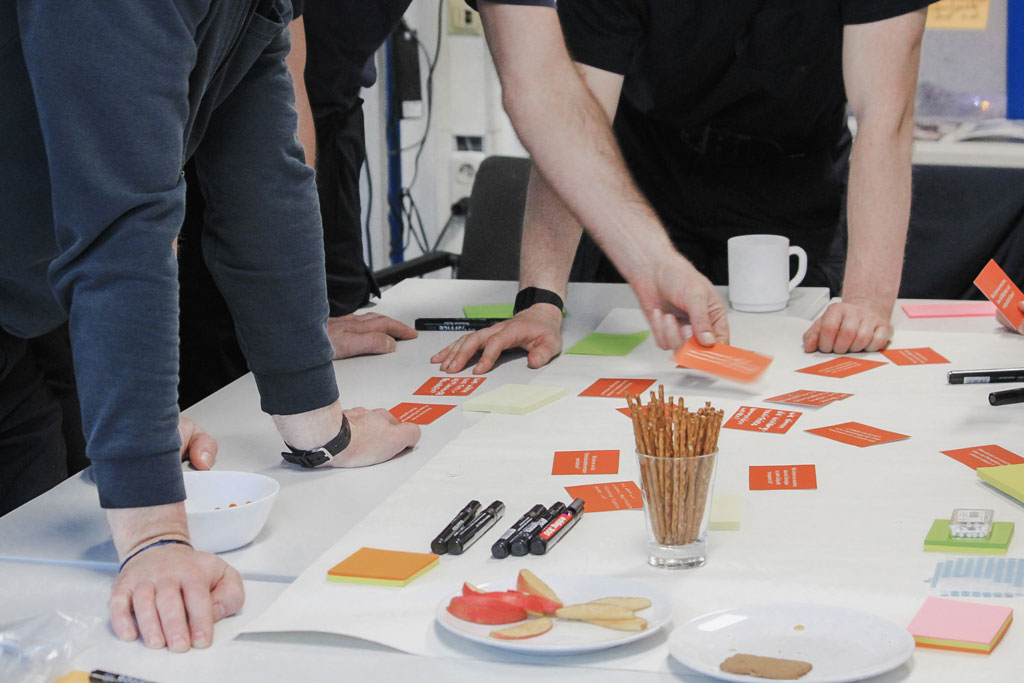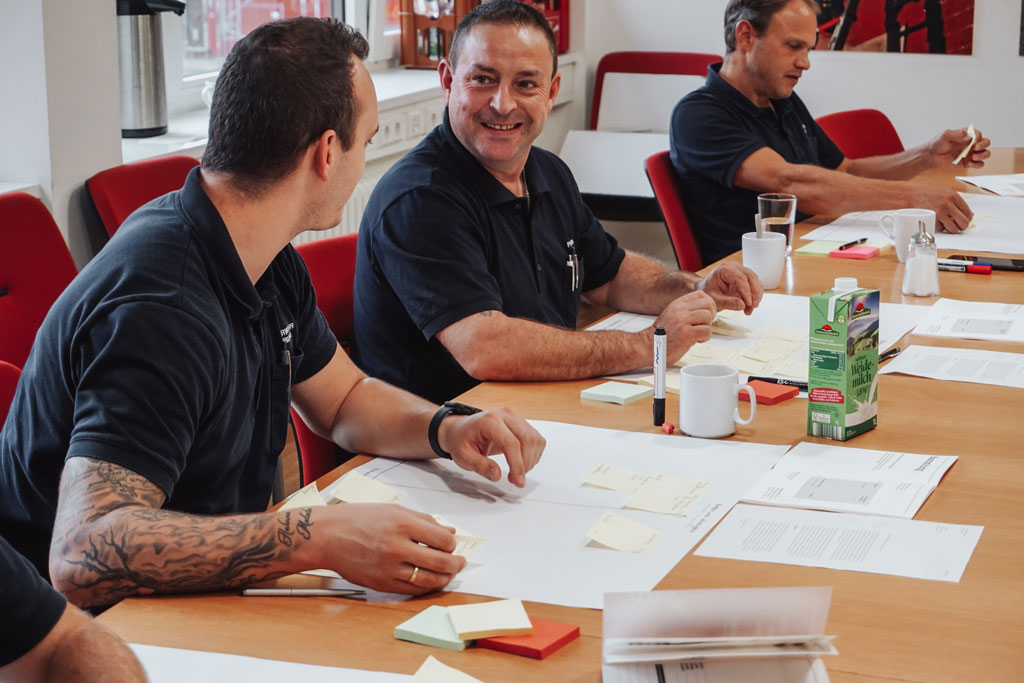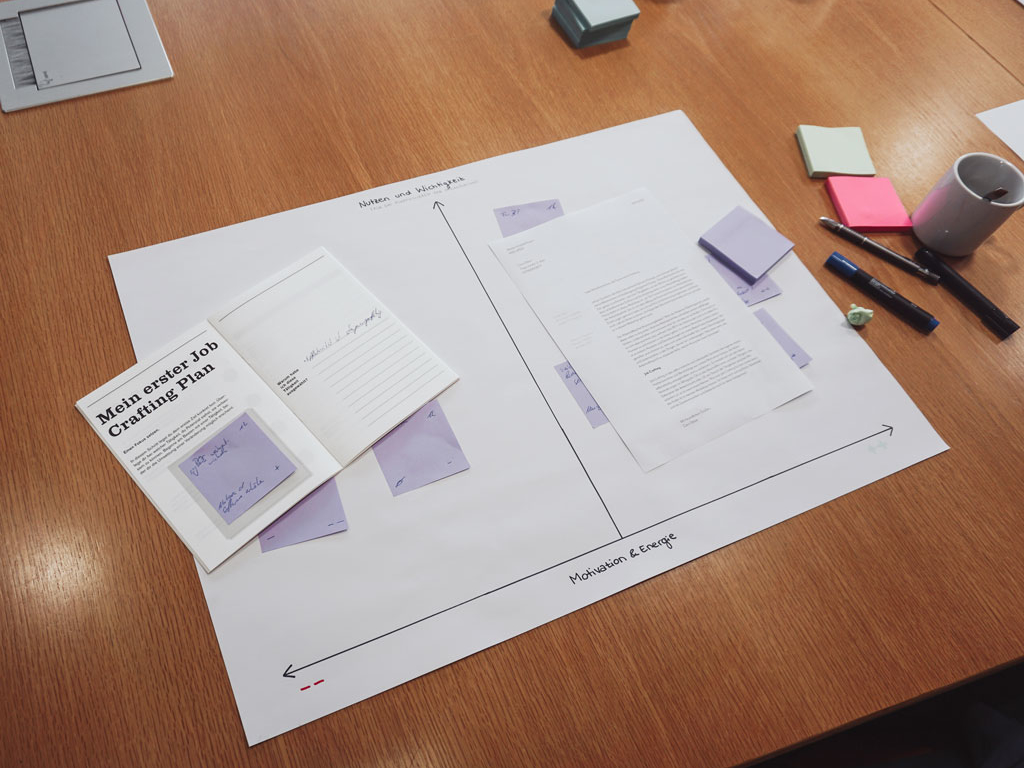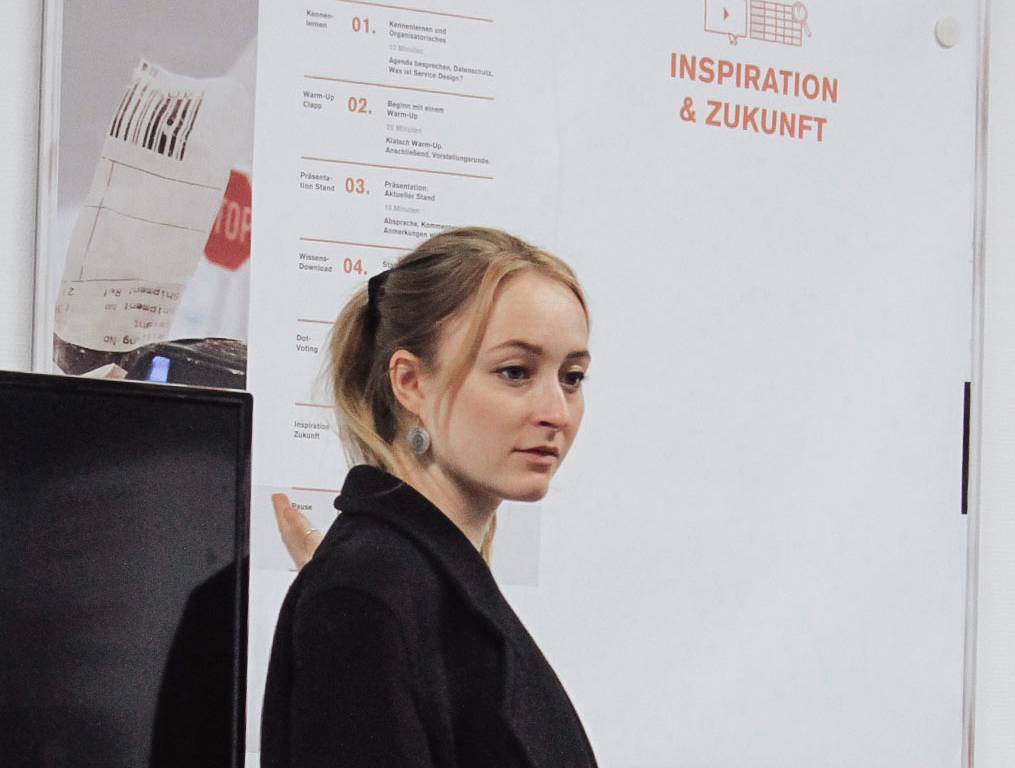In this project, the design researcher immersed herself in the work life of a firefighter. During this time she observed that while rescue operations are organized and managed perfectly leaving no room for mistake, life at the station is quite different and often very stressful. Each fire department in Germany is struggling with different challenges, but all have one common challenge: To keep up with the rapidly changing demands of external forces. This thesis sheds light on the part of the firefighter’s work life that is not well known to the public. If you are interested in Public Human Resources, Service Design Methods and Rescue Services, I hope you will enjoy learning more through this work.
This master thesis deals with a vital force in our society: the professional fire brigade. Firefighting forces secure our fundamental right to life, physical integrity, and property. The present work deals with a side of a firefighter’s daily life that is mostly invisible to the public eye: It examines exclusively how the work life is at the fire stations.
The goal of this qualitative study is to investigate the everyday operations at the station that substantially influence the employees’ job satisfaction. Within the past year, a six-day observation, three sessions of a focus group workshop, three sessions of job crafting workshops, eleven interviews with firefighters, and three recorded interviews with professionals were conducted at fire stations in Western- and Southern Germany.
The data was evaluated by diagnosing strengths and weaknesses using qualitative methods. The findings show that some applications and tools at the station do not support the firefighter’s administrative tasks in the best possible way and that some tasks are not perceived as meaningful. Therefore, there are processes at the station that could be designed to be more efficient and meaningful for the employees. The focus of this thesis is on finding a way to design the daily tasks and routines to align more with the strengths and needs of firefighters in order to support their adaptation to ever-increasing and changing job demands. The concept called job crafting is used to support this endeavor. As layers of management reforms increase, demographic changes evolve and cities grow, the job demands have increased and changed while the internal mechanisms have largely stayed the same. In response, the organization is fighting to stay future-proof and to offer an attractive workplace for coming generations. There is rich evidence showing the positive effects of job crafting on the work ability of employees in different contexts. This thesis examines whether job crafting could be as promising in German fire departments by testing it. Before this study, the exact freedom and limitations in which the employees have autonomy are set by the organization and haven’t been explored by researchers in detail. The key insights led to the concept creation of a platform that provides tools for building a more adaptable workforce.
Preliminary Research Question: “How can job satisfaction at the fire station be improved to benefit employee well-being and drive positive change in the organization?”
Final Research Question: “How might employees be facilitated in proactively shaping their work to meet the high job demands?”
Methodology:
Case Study using Action Research
This is a case study that draws conclusions based upon the data that is collected with methods typically used in social sciences. The four methods used are observation, interviews, focus group workshops and probes. In general, the study looks at particular events occurring only at the station of a fire department and touches on the what’s and why’s of these events. The basis for this study is research through action as its main methodology. It combines “action” and “research” (Elliott, 1991) meaning practice and research are not seen as two separate stages, rather integrated with each other (Somekh, 1995). With this methodology, practitioners carry out research according to the challenges found in real work situations, which is typical for investigating a social situation. As an action researcher, I take the temporary role as an observer and facilitator, which in this study takes form in the four methods used. As the author of this thesis, I believe in the act of creation through process. That is why this project is a constructive design research project. The collection of data is based on constructing knowledge in and through the action of the employees. At the center of the process, there will be a concept creation for better idea management for the organization. The research started in September 2021 with desk and field research followed by problem focussed workshops with firefighters at Deep Lake City. Next, there was a desk research phase combined with the creation of a second workshop aimed at facilitating job crafting at fire stations. This was then tested at the fire station in Green Field in October 2022. The intention of the project is to carry out a pilot project at the Green Field station that delivers valuable findings for the human resource department and leadership. This concept will be grounded in evidence and information collected first hand from the participants and from being physically present. As an external force that is not constrained nor biased by the organization’s leadership, the outcome will demonstrate one step that management can take toward cooperative problem solving in the long run. As the research approach and collection of data are grounded in action research, the outcome is not final and could be iterated on further.
Findings and Insights:
Two hypotheses were investigated in this project:
(A) The firefighters of Deep Lake City are not equipped with the most efficient tools for their station-based operations, which affects job satisfaction of the firefighters negatively.
(B) Job crafting methods offer a way to design a more meaningful and engaging work life for the firefighters, leading to higher job satisfaction.
Hypothesis A was corroborated and hypothesis B was not corroborated. The justification of each finding can be found in the work submitted to the archive.
May findings led to the following conclusion: Ensuring a sustainable workforce means securing the employee’s well-being. To combat the imbalance of job demands with red tape and austerity measures and available job resources of the firefighters, job crafting is a solution ahead of its time. If the organization wants employees to resourcefully craft their jobs and reap the benefits of this, it should invest in applying service design methods and tools to create the right conditions first. In order to achieve this, design researchers like me should not just temporarily fill the function of a facilitator, but there should be a permanent relationship between Service Design and the city’s human-resource department – making human-resource department employees into facilitators and change initiators. By working with the firefighters, this research exposed the effects of red tape and austerity on the well-being and task load at the end of the chain of command: Low Job autonomy, time-consuming administration, and frustration. Attempts to adapt to outside pressure and innovation have not all been efficiently solved by governing bodies, which in some cases results in a high workload at the station for the firefighters. If the organization wants to facilitate job crafting and benefit from all its self-driving qualities, it is important to adopt empowering leadership that supports employees with the necessary power and autonomy and shifts the culture to one where employees feel comfortable and encouraged to try new ideas. Hopefully, this thesis has inspired a public service designer, a leader, a firefighter, or a human-resource employee to work towards a flexible and adaptable workforce, allowing employees to resourcefully craft their jobs and make valuable contributions, even if they are small. It would be one step in the pursuit of ensuring a sustainable workforce, employee well-being, and generally a future-proof organization.
Elliott, J. (1991). Action research for educational change. Milton Keynes, UK: Open University Press.
Somekh, B. (1995) The Contribution of Action Research to Development in Social Endeavours: a position paper on action research methodology, British Educational Research Journal, p 339-359.


